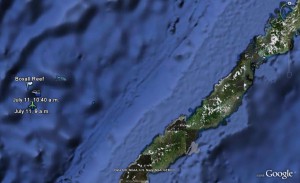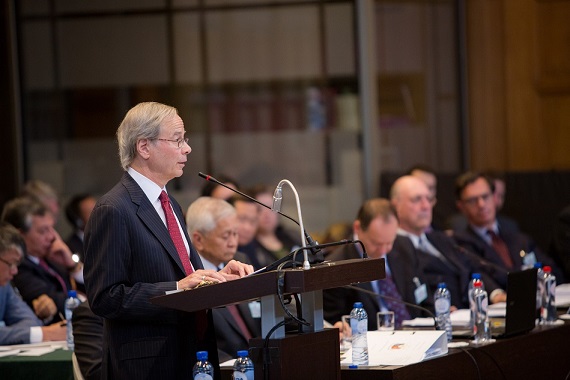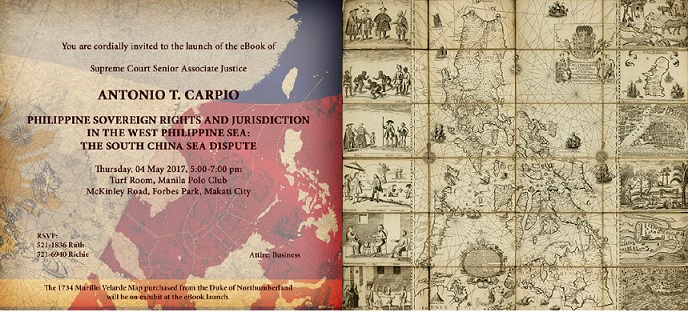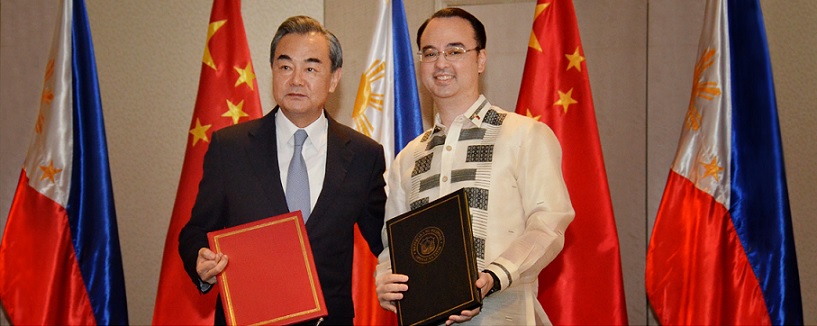AN aggressive overflight reconnaissance over Philippine-claimed isles in the oil-rich Spratlys group of islands in the West Philippine Sea (South China Sea) had been monitored and reported to the Philippine military shortly after Foreign Secretary Albert Del Rosario returned from his visit to Beijing.
On July 11, two unidentified aircraft were spotted in the airspace within the country’s 200-nautical mile exclusive economic zone, according to a spot report seen by VERA Files.
Filipino fishermen sighted the aircraft, a gray chopper and a green plane they said resembles a “Tora Tora” or a T-28 fighter plane, flying low at Boxall Reef located 163 nautical miles from the Philippine Navy’s naval station in Ulugan Bay or 97 nautical miles from the southernmost tip of mainland Palawan.
A group of fishermen saw the green plane at 9 a.m. and another group spotted the gray chopper at 10:40 a.m., heading in the same northern direction, the report said.
The Tora Tora-like plane was hovering in the area at an altitude of about 20 feet and the chopper at about 30 feet, it said.
Quoting the fishermen who reported the sighting of the chopper, the military said, “There were more or less five crew on board and wearing green uniform. The small markings on its undercarriage were unreadable.”
On June 4, Defense Secretary Voltaire Gazmin disclosed that an identified fighter plane buzzed about 20 feet over the tip of a Filipino fishing vessel’s antenna in “Dalagang Bukid” or Investigator Shoal, about 210 kilometers off Palawan’s Balabac Island. That scared off the fishermen, he said.
Gazmin said that was then the latest intrusion into Philippine territory in that contested area west of Palawan. He declined to speculate on the identity of the warplane, preferring to call it “unidentified” as reported. However, he said recent intrusions had been blamed on the Chinese.
The Philippines earlier protested to China what it claims were incursions into Philippine territory.
About seven incidents have been reported in recent months, starting off with the shooting in February of Filipino fishing boats at Jackson Atoll by a Chinese warship with bow number 560 that the Philippine military identified as Dongguan, a JIANGHU-V Class Missile Frigate traced to the People’s Liberation Army-Navy South Sea Fleet.
In May, two OV-10 reconnaissance planes of the Philippine Air Force were reportedly buzzed over by a tandem of MIG-29, which was conveniently attributed to belong to China.
But China’s defense chief, who was in Manila on May 23, was quick to deny his country had MIGs in their aircraft inventory. The PAF report on the incident did not identify the make or even the type of the aircraft because only the trace of smoke at an altitude of 5,000 feet was actually seen.
The U.S. Carrier Strike Group 1 led by its mother-ship USS Carl Vinson was in the South China Sea en route to a port call in Manila around the time of the sighting.
During the June 4 sighting of another unidentified fighter jet in Philippine airspace west of Palawan, the USS Chung Hoon and USS Howard were anchored in Palawan for the Cooperation Afloat Readiness and Training Exercise with the Philippine Navy.
Two days before the July 11 sightings off Boxall Reef, the USS George Washington aircraft carrier was navigating the South China Sea en route to a joint naval drill with Australia and Japan off the coast of Brunei.
The first joint military exercise between Japan’s Maritime Self-Defence Force that sent its destroyer Shimakaze to join a U.S. Navy destroyer and a Royal Australian Navy patrol boat for communications training and other drills in the South China Sea took place on July 9.
Last June 22, China issued its most direct warning to the U.S. amid recent tensions in the disputed South China Sea “to leave the dispute to be sorted out between claimant states.”
There are overlapping maritime jurisdictions and territorial claims over the South China Sea, believed to be abounding in oil and gas. The Philippines occupies nine of the 53 islands it claims in the mineral-rich Spratlys chain in the South China Sea, which China claims wholly. Vietnam, Malaysia, Brunei and Taiwan have also staked their claims on some of the 160 islands or so.
In Del Rosario’s first official visit to China last July 7-9, China also stood pat on its position to settle the issue of the territorial dispute bilaterally with claimant countries, in contrast to the Philippines’ strategy of a multilateral approach. China also dismissed Philippine claims of intrusions as it maintains its claim of undisputable sovereignty over the whole of South China Sea.
China also rejected the Philippines’ suggestion to bring the issue of the competing claims before the International Tribunal on the Law of the Sea.
The South China Dispute is expected to be high on the agenda in this week’s Association of Southeast Asian Countries Ministerial Meeting, Post Ministerial Conference and ASEAN Regional Forum in Bali.
Del Rosario said during his meeting with his counterpart in Beijing, the Chinese has taken the position that the South China Sea issue should not be discussed in international forums.
“China’s position was that we are neighbors and as close friends, we do it quietly between us in the bilateral scenario. The position we took we have our own national interest to protect and we will be guided accordingly,” he said.




